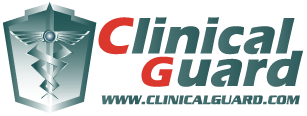Do I need a Pulse Oximeter?
Since you're here at ClinicalGuard.com, you probably browsing for medical equipment at affordable prices. Our best-selling category of products is Pulse Oximeters . How does it work? Do you need one? Let's take a look.
The blood consists of many different cells. The one carrying oxygen is the red blood cell. However, it's not always red. "Red" blood cells turn red when they encounter oxygen. When they do not contain oxygen, they are blue in color. Your arteries are red from carrying blood from your lungs and your veins are blue from carrying blood cells to your lungs. A patient who is not getting enough blood in his or her arteries will appear to have a dark or purplish color.
The circulatory system helps facilitate the transportation of oxygen thorough its oxygenation in the lungs its dispersion through the rest of the body. The heart, also oxygenated by the red blood cells, pumps the blood through the bloodstream. Healthy individuals have arteries that are a bright reddish color.
The part of the red blood cell that transports the oxygen molecules is called the hemoglobin. The hemoglobin absorbs and delivers the oxygen to the other cells in the body. That is where pulse oximeters come in.
What The Pulse Oximeter Does
The oximeter provides a non-invasive method of determining the amount of oxygen gets pumped from your heart through your circulatory system. By placing a pulse oximeter such as the Clinicalguard 50DL over your fingertip, it measures your blood oxygen saturation. By using a light and a sensor, the Clinicalguard 50DL measures the color of your blood and then using a mathematical algorithm, determines the oxygen saturation level.Depending on the amount of oxygen in the hemoglobin, the amount of light absorbed is different. When blood is fully saturated, the reading will be 99%. If for some reason such a pulmonary condition, the levels will be lower and will generate a lower reading.
While important, the pulse oximeter is only one tool in the caregiver's arsenal. A caregiver should never alter the amount of oxygen prescribed without the expressed permission of the patient's doctor or other medical professional. The pulse oximeter is a safe and accurate way of gaining a blood oxygen saturation reading without having to go to the doctor’s office. This may be the perfect product for you.

